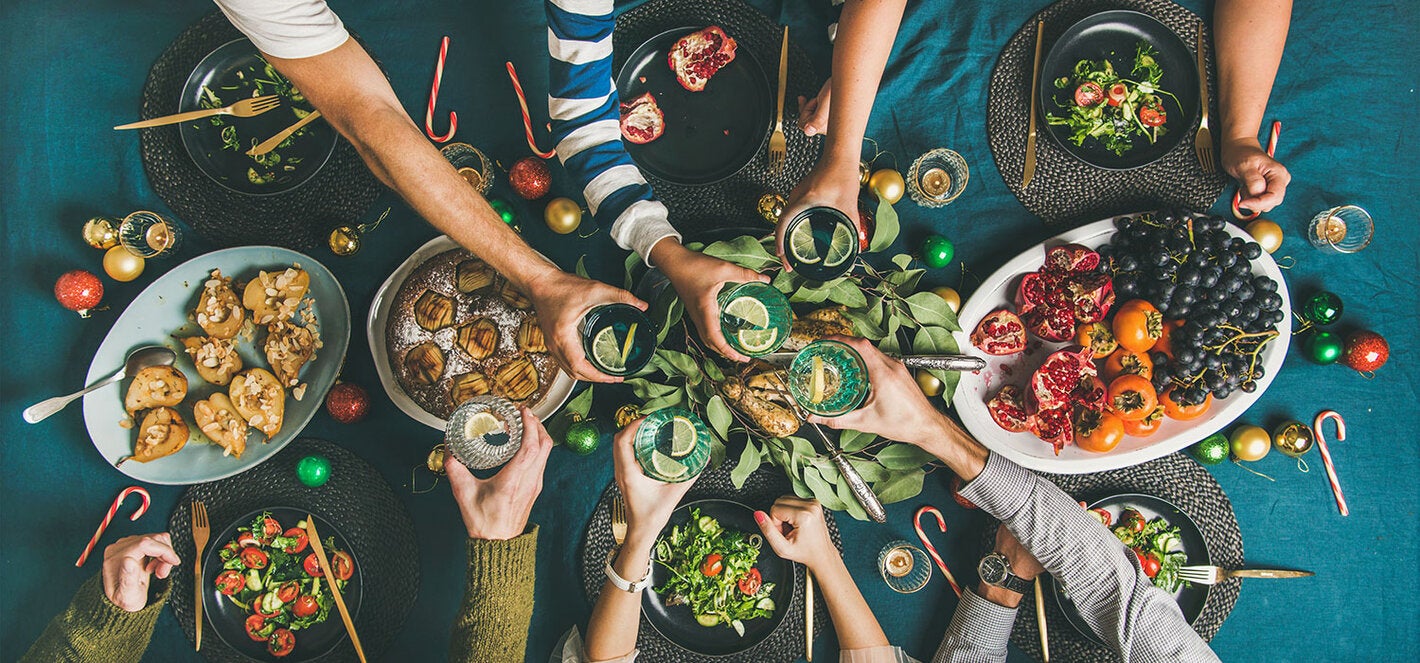
An estimated 77 million people in the Americas suffer an episode of foodborne illness each year, half of them children under 5.
Washington, D.C., 21 December 2015 (PAHO/WHO) — More than 210,000 people suffer an episode of foodborne illness every day in the Americas, and half of them are children under 5. During the holidays, the risk of these illnesses can be increased by poor handling and inadequate refrigeration of foods prepared ahead of time and in large quantities. To prevent these illnesses, the Pan American Health Organization/World Health Organization (PAHO/WHO) recommends "five keys to food safety."
These five simple keys to safe and healthy food are: keep clean, separate raw and cooked, cook thoroughly, keep food at safe temperatures, and use safe water and raw materials.
"Following these five keys helps consumers know they are handling foods safely and preventing microbes from multiplying," said Dr. Enrique Perez, PAHO/WHO senior advisor on food-borne diseases and zoonoses. "They are simple and practical, and can be applied in people's homes as well as in food establishments."
Food prepared and consumed at home are responsible for about a third of outbreaks of foodborne illness, and a large proportion of all episodes of foodborne illness are caused by bacterial contamination that results from a handful of dangerous practices.
Food contaminated by bacteria, viruses, parasites, or harmful chemicals causes over 200 diseases, from diarrhea to cancer. In the Americas, an estimated 35 million children under 5 suffer from these illnesses each year. In addition to children, pregnant women, people with compromised immune systems and older adults are more vulnerable to these types of illnesses.
Symptoms of foodborne illness include stomach pain, diarrhea, nausea, chills, fever, and headache. In some cases, foodborne illness can be fatal. Symptoms can appear anywhere from 30 minutes to two weeks after a person has come in contact with foodborne bacteria, although they usually appear in the first 4-48 hours.
The PAHO/WHO Five Keys to Safer Food are, step by step:
1.Use safe water and ingredients
Use safe water or treat it to make it safe; select fresh and wholesome foods; choose foods processed for safety such as pasteurized milk; wash fruits and vegetables, especially if eaten raw; do not use food beyond its expiry date.
2. Keep your hands, utensils, and surfaces clean
Wash your hands before handling food and often during food preparation; wash your hands after going to the toilet; clean all surfaces and equipment used in food preparation; protect kitchen areas from insects, rodents and other animals.
3. Cook food thoroughly
Cook food thoroughly, especially meat, poultry, eggs, and seafood; bring foods like soups and stews to boiling. For meat and poultry, make sure juices are clear, not pink; reheat cooked food thoroughly.
4. Keep food at safe temperatures
Do not leave cooked food at room temperature for more than 2 hours; refrigerate promptly all cooked and perishable food (preferably below 5°C); keep cooked food piping hot (more than 60°C) prior to serving; do not store food too long in the refrigerator; do not thaw frozen food at room temperature.
5. Separate raw from cooked food
Separate raw meat, poultry, and seafood from other foods; use separate equipment and utensils such as knives and cutting boards for handling raw foods; store food in containers to avoid contact between raw and prepared foods.
"Food safety: From farm to plate. Keep it safe." was the slogan of this year's campaign for World Health Day, April 7, which marks the anniversary of the founding of WHO in 1948. The campaign calls for action to ensure food safety throughout the food chain, from production to consumption. Salmonellosis, gastrointestinal illnesses, and infections with E. coli, among others, sicken some 582 million and kill more than 350,000 people worldwide each year.



